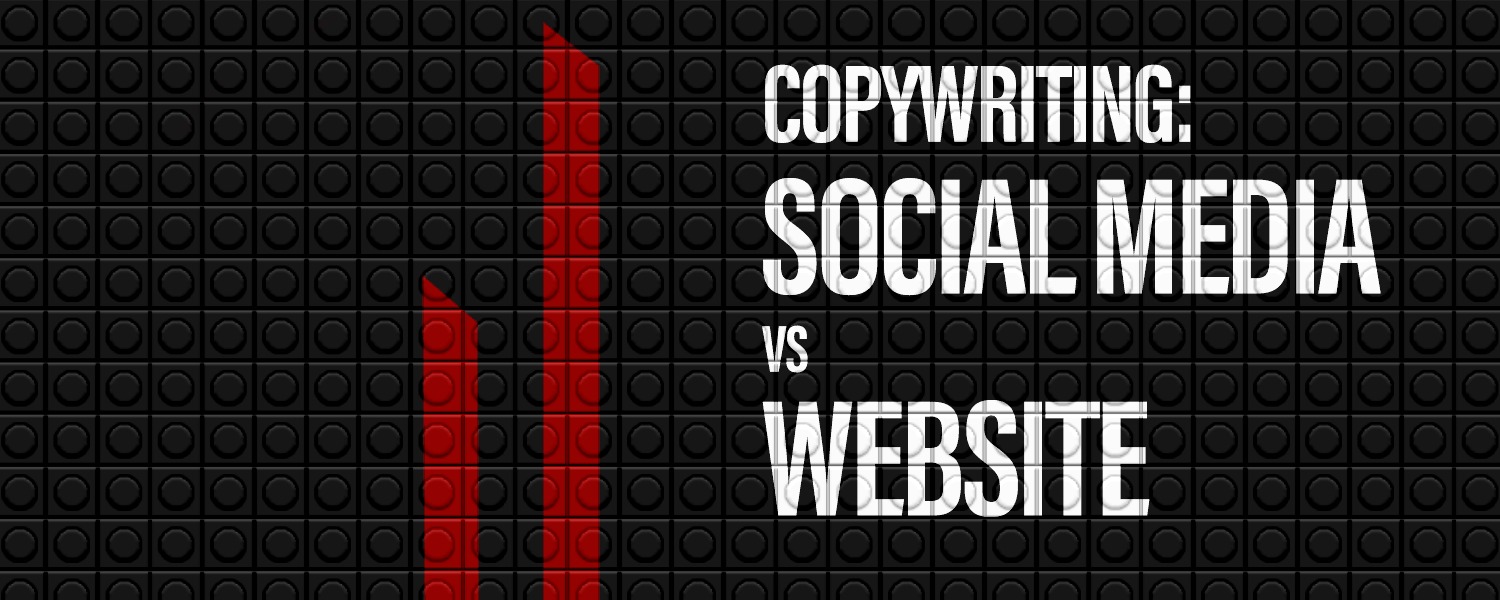
Copywriting for Social Media vs Website
Ok, so what are the differences between copywriting for social media vs website? Well, there are a few and sadly, many peeps are still making basic mistakes.
“But wait”, I hear you all ask. “Surely writing is writing and as long as the message is clear, it’s going to hit the spot, right?”
With that approach, my copy-crippled comrades, the only spot you’ll be hitting is the one on your forehead banging it against the wall when your social posts are only being liked by your nan, and your website copy leaves people more in the dark than before they started reading.
So let me take you through the differences.
Writing for social media
First, let’s think about people’s mindset on social media, especially platforms like LinkedIn. There is a misconception that decision-makers log in to LinkedIn to do business (excuse me while I roll my eyes and snort my coffee).
That these busy professionals are so time rich, they spend endless hours scrolling their feeds, reading each and every post. Taking in even the most mind-numbingly mundane content, just to fill their days.
They don’t. Ever.
Business leaders (the people that may buy your service), are in fact extremely time-poor. and often use social media as a quick escape from the chaos of their everyday working lives. A 10-minute tea break. A cheeky 5-minute puff by the bike racks. This means if you want to grab their attention in a sea of drab drivel, you need to get to the point.
Quickly.

The First Line Hook
You literally have seconds. No scratch that. You have milliseconds to stop people in their tracks and ensure their eyes go from half closed and bored, to fully open and intrigued. This means your first line hook needs to be on point.
“This was the one thing that changed my day.”
“I’d never seen it done this way before.”
“These 3 things transformed by business.”
“It wasn’t working, until I changed this.”
All four of these openers create intrigue and entice a reader to hit the ‘see more’ button, desperate to find out what ‘This’ or ‘These’ or ‘It’ is.
Think about what would stop you from scrolling. Put yourself in the mindset of your buyer on a 10-minute break from a stressful and problematic day and think… What would get my attention today? What do I need to answer to do my job better?
Your first line hook is the most important part of your social media content. Get that right, and other ‘below-par’ elements can sometimes be forgiven. Get it wrong, and the rest of the content could be the mother fucking Al Pacino of social media storytelling… It will never be seen.
Make your social media post accessible
The body of your post is what will ultimately make you memorable for the right reasons. It’s the part where all the value is, but only if you structure it in the right way, and boy, have I seen some corkers over the years.
This is possibly where the biggest difference between writing for social media and writing for a website comes in. You have won your audience over with your hook, but you can’t now think you’ve got them for the duration of their cheap office coffee and dog-eared roll-up.
These people have 8 more minutes of aimless thumb-flicking to do if they are to get through the sea of pitiful posts most people are producing.
Keep the sentences short.
Keep the paragraphs short.
Keep the drivel down to zero
Keep the lines separated like this
If someone opens your post after your hero-like hook, and see’s a wall of text that would be more at home in a 600-page novel than it would on social media… That hook you worked so hard on is very quickly forgotten.
Think ‘perception’. 10 lines of copy separated by another line feels like much less of an effort to read than 10 lines with no spaces. It’s the same number of characters, but a reader’s instant reaction when they hit see more is that a well-spaced post is easier to digest. This means that in that split second, they are more likely to continue reading
Copywriting for a website
So, everything I’ve just said above, now do the opposite for a website.
(Thinks about just leaving it there and going home).
Of course, it is not quite that simple, although much of what I’ve said works on social media, isn’t always the go-to strategy for website copy. And that my friends, is for one very important reason…
People are at a very different point in their buyer’s journey on your website.
Whereas social media is an awareness play, people landing on your website have usually found it because of a ‘high-intent’ search through a service like Google or Bing. They are not aimlessly visiting websites for something to do, these are people that have a relatively immediate issue and need a resolution.
Ditch the industry jargon
The one thing people do have in common whether they are on social media or your website, is that they are time-poor. When they land on your website, however, you can probably throw frustration into the mix as well. This means bamboozling them with industry jargon just to make you sound special, will be an instant turn-off.
From the moment they land, make it very clear in your header copy that they have come to the right place. Spell that shit out in plain queens English (but not as proper as the queen) and leave no room for question or debate. As with your hook on your social posts, don’t let the first thing they see, be the last thing they see.
Within one flick of their overused thumb, they should know exactly how you are going to make all their dreams come true. Or at least the dreams they are having about their business. Answer their questions. Solve their problems. Show them how easy it is.
If your key messaging is buried deep in the pages of the website or 87 thumb flicks down, you are asking these frustrated, time-poor buyers to do a lot of work before they even know if you are right for them. Most will not get that far.

Clever Call-to-Action
Remember, everyone who lands on your site is different. Some will need a lot of information, and others will be able to make a decision based on a few words and a pretty picture. Within the content on your site, you need to cater for each of these people with multiple call-to-action points.
Asking someone to read an entire page before you give them the option to take action simply won’t capture your entire audience. These people might be higher intent than your average social media scroller, but they still need to be guided through the process and directed where to go.
Otherwise, they could feel like they are landing on your site with a blindfold on, expected to know how to transact.
Throughout your web pages, introduce multiple CTAs that give the viewer the option to take the next step, or continue reading. You never know when you’ve said enough, so don’t make everyone wait until the end before they are allowed to move forward.
In Summary…
Despite the opinions of the uneducated, writing for social media is very different from writing for a website. For social, you are swimming in a sea of a million other creators, all trying to grab onto the ring thingy for dear life before it floats away downstream.
(The ring thingy being a potential client)
For a website, your audience is in a very different place. They are intent on spending money and they know which ballpark they are going to spend it in. The job of your website copy is to solve their immediate problem quickly, without causing them any additional ones in the process.

